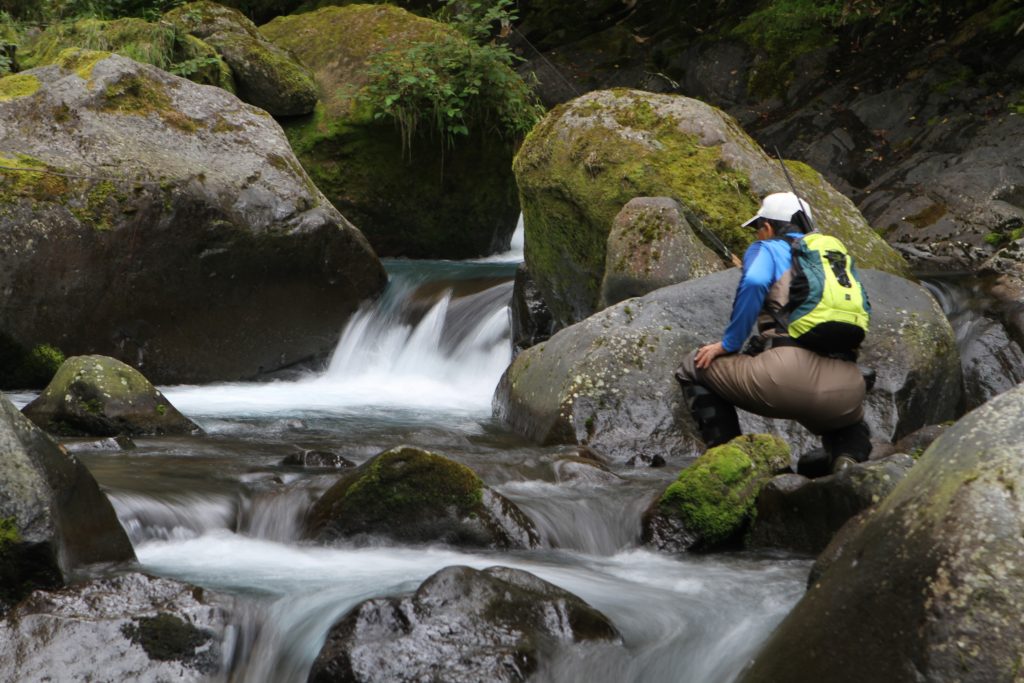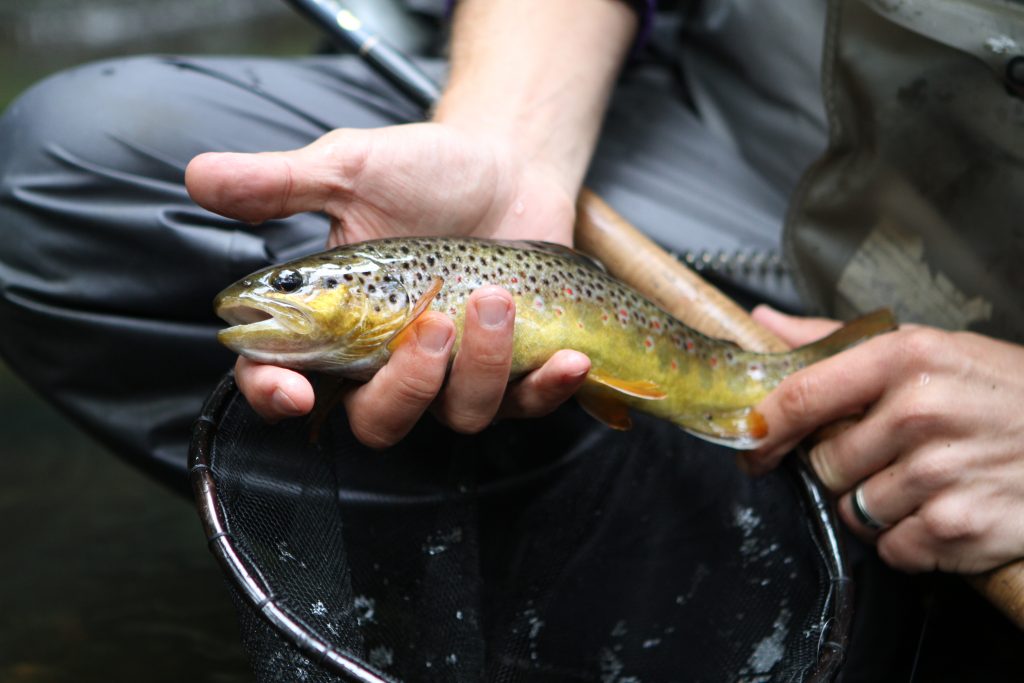
If you will, close your eyes and consider the phrase “fly fishing.” What kind of images – or even emotions – does it conjure up? If you’re an enthusiast, perhaps you can envision a particular place or moment, maybe even the cool rush of water past your waders as you stand silently in the middle of a river. But even if you’ve never participated in the sport, you can probably still drum up the iconic image of an elegant arc of fishing line dancing through the air before floating down to rest in the water.
Daniel Galhardo is quite familiar with these images, and really, the poetry of this sport. As founder of Tenkara USA, an outdoor gear manufacturer that specializes in the Japanese method of tenkara-style fly fishing, it’s his mission to make sure you can envision – and more importantly, experience – that kind of imagery, too. Galhardo himself had visions of fishing in “beautiful and clear” mountain streams before a 2007 visit to Japan with his wife. He became so enamored with the aesthetics and simplicity of the method, which uses a very simple portable rod, that he brought one home afterward. After sharing his enthusiasm with non-angler friends and being pleasantly surprised by their interest, he saw the value in introducing tenkara to a new audience on a much broader level.
Here, Galhardo shares his thoughts on the importance of storytelling for Tenkara USA, along with suggestions for photographers and filmmakers who want to not just capture the spirit of the sport, but also work with small or mid-sized outdoor brands like his own.

On spreading the word about the tenkara method and Tenkara USA
Video-making was the most important thing I think that I did early on. There’s nothing like video to kind of help share the story, to show what it looks like in action, and to really paint a moving picture. If you’re super eloquent, you can kind of describe it, but if people don’t get to see it in person or at least see it in a video, then it’s really hard for people to connect the dots.
On choosing the best type of media to connect with an audience
I kind of feel like there’s almost equally important room for all of the different media; they all kind of complement each other. I love the idea of looking at multimedia offerings in general, because it does offer people what they want, when they want it. Our videos are good for connecting with people on a more emotional level, but my podcast has been really popular with our existing customer base.
On why visual storytelling works well with fly fishing
It’s a little different from the more typical fishing with bait where you kind of cast once and wait for the fish to find your bait. With fly fishing, there is this art, there is this movement that lends itself really well to being filmed.
On the importance of storytelling
Storytelling is paramount to me. I had a realization a few years ago that we are really in the business of telling the tenkara story. I believe the best way to keep fly fishing simple is to understand how the Japanese anglers are practicing tenkara, because they’ve really stayed away from complicating it. If you’re coming from a fly fishing background, a lot of the stuff in tenkara is really counterintuitive, but there’s a whole culture of people that practices that way – and it works equally well or better in some cases. Sharing that story, to me, is really interesting. Hopefully that kind of leads people to have a little bit of an open mind when it comes to different cultures and different ways of thinking about things.

On getting the shot
Some people are good at kind of being in the right place at the right moment – knowing when to be far away from the angler and when to get close to the angler so that, yes, you’re capturing the scenery, but you’re also capturing the action when it happens.
On what qualities he appreciates in a photographer or filmmaker
I’ve been lucky that I’ve had a lot of really good experiences. It’s hard work, because you want them to be available the entire time – even if you’re eating lunch, your camera is kind of ready to jump into action. There are a lot of long hours if we’re in the field, there’s a little bit of roughing it – it’s not the most comfortable. This is really important for outdoor branding shooting. It’s kind of nice for people to just be able to roll with the punches, as we say.
On working with photographers and filmmakers
If people make it easy for us to work with them, I love commissioning content – photography and video – because we do have needs. I’ll pay you a good day rate, but there cannot be any usage fees involved, because I want to be able to use the [content] when I need to. Sometimes there are cool events or a cool trip going on in a different part of the country, and it’s nice to develop relationships with people across the country. It’s much more efficient to tap into somebody closer to where an event is happening than it is to fly somebody with me.
On final advice for creatives who want to shoot with Tenkara USA or other brands
Just keep connecting with the brands. I’ve heard from a couple photographers in the past that it is really hard to break into the industry, that it’s hard to go out and shoot and get work because there’s so much competition, but if you grind, that will generate a lot of work. I’d probably suggest making it really easy in the beginning, because that allows you to develop relationships, it allows you to show your work, your work ethic, your work quality, without getting the door closed in your face right away. Once you have a very established name, then you can worry about making it more difficult if you want to. I mean – I understand the struggles, don’t get me wrong! I’m not saying make it cheap or not worth the while, but don’t get caught up in what the industry veterans say is the “right” way to do it.
All images courtesy of Tenkara USA
